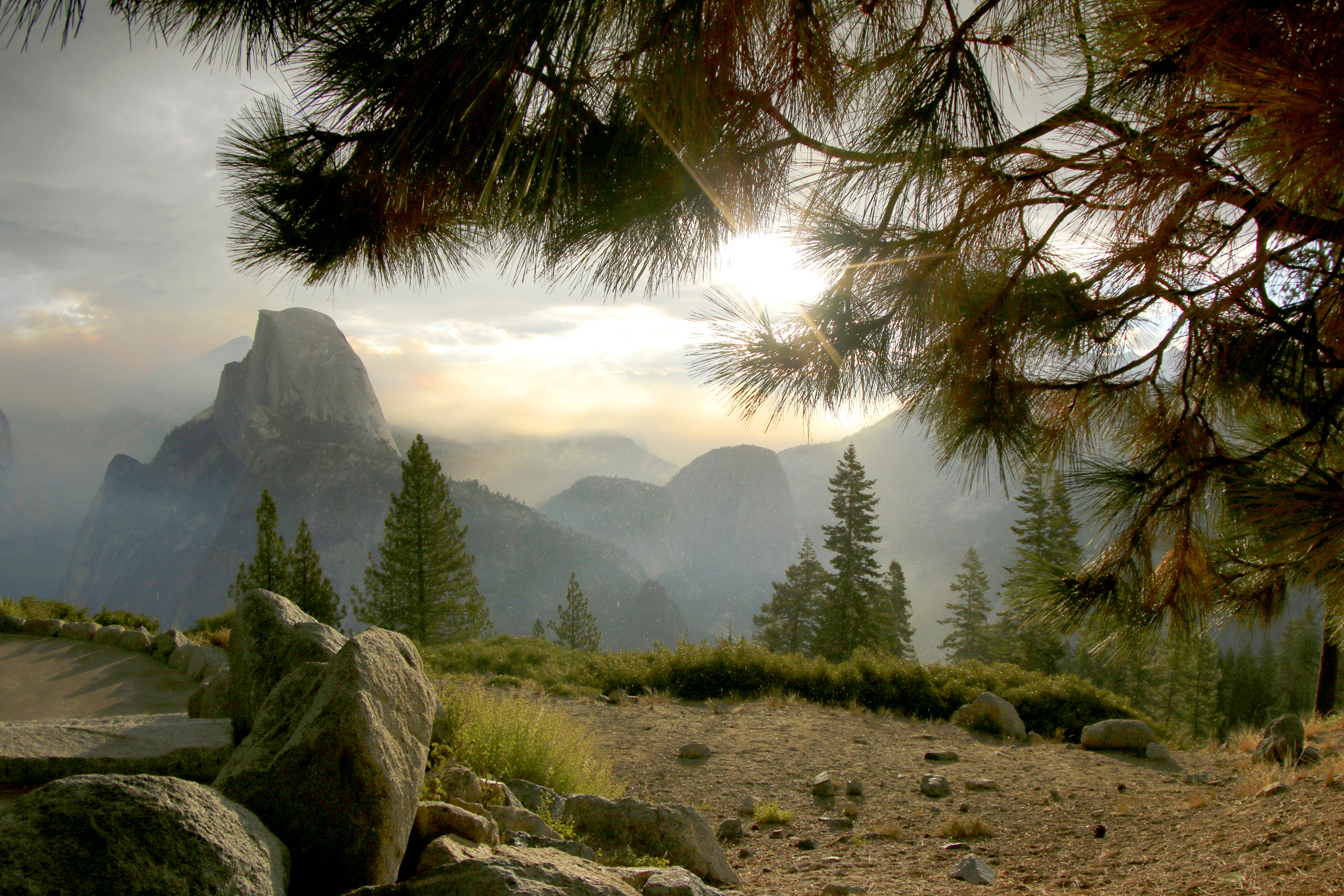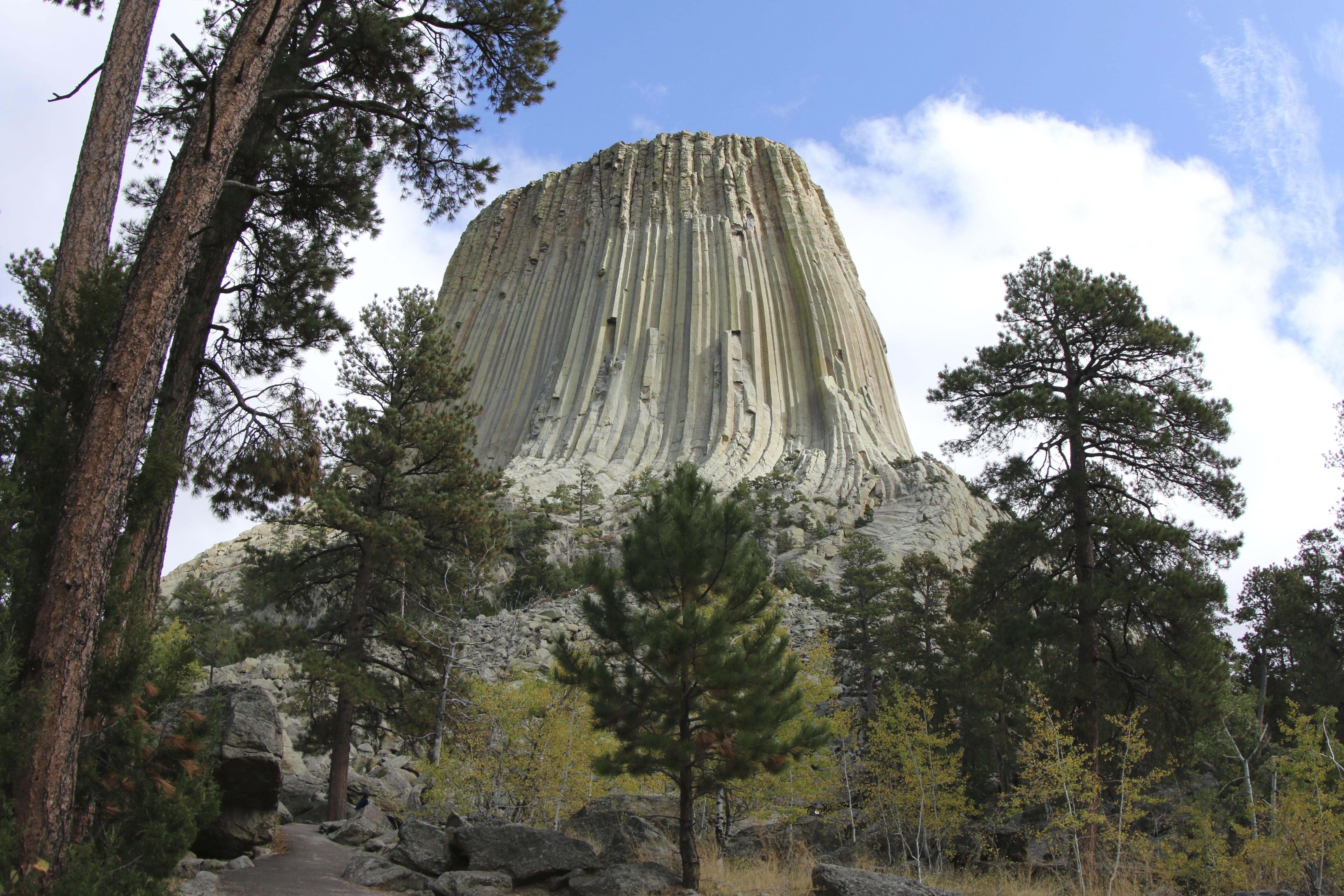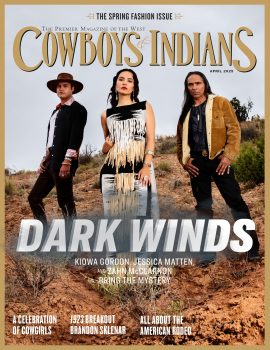The man from Montana has amassed a mountain of climbing fame — and accolades for the new IMAX national parks tribute featuring him.
Great mountain climbers tend to share two common traits: an irrepressible attraction to places most of us can’t fathom without an armchair or a movie pass and a matter-of-fact attitude about it all.
“It’s what I love to do — just having that connection to gravity, experiencing that camaraderie, and living in the moment,” says elite rock, ice, and mountain climber Conrad Anker without a hint of anything beyond grounded, contented acceptance. “I don’t think any climber can ever plan to be one of the enviable few who are actually paid to climb for a living,” he adds. “I still have to pinch myself.”
At age 53, Anker has garnered more headlines over decades of spectacular climbs around the globe than the low-key Montana-based family man would ever let on. They include dizzying first ascents from Alaska and Baffin Island to Patagonia and Antarctica, to multiple expeditions in the Himalayas — where in May 1999 he would famously discover the body of legendary 1920s mountaineer George Mallory on the upper slopes of Mount Everest during Anker’s first of three summitings there.
Few mountaineers would run into as much media attention that year as Anker, who found himself not only at the helm of a recent Everest triumph but also part of a subsequent tragedy on Tibet’s 26,291-foot Shishapangma five months later. While on an expedition for an NBC documentary, Anker narrowly survived an avalanche that claimed the lives of two members of the team — cameraman David Bridges and Anker’s close friend and climbing partner Alex Lowe, one of the world’s most renowned alpinists. “I had more stuff go on in that single year than in all of my previous ones,” Anker would note.
And he’s had a lot of stuff going on recently — the sort of stuff that involves not just big mountains but big screens. His latest climbing credits on film include the Sundance award-winning documentary Meru, chronicling his efforts to summit the notorious Himalayan peak Mount Meru (via the Shark’s Fin route), and the newly released IMAX 3D documentary National Parks Adventure, which coincides with the National Park Service’s 100th anniversary.
“I’m a complete advocate of the National Park Service,” Anker says. “My family is from the vicinity of Yosemite National Park, going back five generations, and I was introduced to many of those great parks by my parents. The opportunity to be part of this film is a huge honor.”
Growing up in California’s Sierra country, Anker earned early climbing stripes on Yosemite’s signature 3,569-foot granite wall, El Capitán, and throughout several parks of the West. Now based in Bozeman with wife Jennifer Lowe-Anker and his three sons, Anker is currently a captain of The North Face Global Athlete Team, serves on several climbing and outdoor leadership boards, and works with the Alex Lowe Charitable Foundation, which supports the Khumbu Climbing Center in Phortse, Nepal.
C&I caught up with Anker a couple of days after his return from his latest Himalayan climbing expedition to talk about favorite high places, national parks in 3-D, and what makes this mountaineer’s knees wobble.
Cowboys & Indians: You just returned from familiar stomping grounds and a “second home” of sorts, the Himalayas. Brief us on your latest expedition.
Conrad Anker: I was in the Khumbu region of Nepal with my good friend [Austrian elite climber] David Lama. We were trying to climb a peak there called Lunag Ri, a lesser-known 6,900-meter mountain which hadn’t yet been summited — and still hasn’t. It’s a very challenging, classic alpine climb. We got farther than other teams have, about 300 meters from the summit, but ultimately we didn’t have success.
C&I: Is the climb still a qualified success if you know you made the right decision by turning around?
Anker: Absolutely. Mountains are always going to be stronger than we are, whether you reach the summit or not. If you’re making grounded decisions and you come back alive with 10 fingers and toes and a nose, that alone is a success. We would’ve had to spend the night in the open at 23,000 feet in the middle of November in minus 25 degrees Celsius temperatures and howling wind. So we knew it just wasn’t going to happen this time.
C&I: Next time?
Anker: Yeah, I’d like to revisit and have another go at it. It’s always fun to reach the summit of a peak that hasn’t been climbed yet. The real key, though, is going into it with the right attitude and a sense of exploration — and also valuing the partnership and friendship you build with people along the way.
C&I: Your partnership with fellow die-hard climbing elites Jimmy Chin and Renan Ozturk seems to be the focus in the recent documentary Meru — at least as much as the infamous Himalayan peak itself.
Anker: I’d say it’s the most important part of it. Whether you make it all the way or not, having that chance to be with your friends in a very unique and demanding place like that is the greatest blessing of all.
C&I: In the film, which traces your repeat attempts to climb one of the most unclimbable-looking rocks out there, at Himalayan altitudes, Jon Krakauer calls Meru “the test of the master climber” and you refer to it as “the culmination of all I’ve done.” Where do you go from there?
Anker: Well [laughs] ... down, I suppose. I still want to do fun and challenging climbs, but at this point in my career, I don’t need to be upping the ante any more than that. Meru was it. I’d say that was the one that really pulled everything together for me.

C&I: You’re now on the giant screen with stepson Max [Lowe, adventure photographer] and fellow adventurist Rachel Pohl in the new MacGillivray Freeman IMAX 3D release National Parks Adventure. More than 30 U.S. national parks were scouted for this movie. How many did you personally visit over the course of the production?
Anker: The film covers a whole bunch of parks, including crown jewels like Yellowstone, Yosemite, Glacier, and Everglades. I visit Devils Tower National Monument in Wyoming; Arches, Canyonlands, Zion, and some [Bureau of Land Management] land around Moab in Utah; and then Pictured Rocks National Lakeshore in [the] Upper [Peninsula of] Michigan.
C&I: Pictured Rocks may be the one park on that list that isn’t already familiar to many of us. How did that location come about?
Anker: Quite unexpectedly. We’d initially planned to shoot some ice-climbing sequences close to my home at Hyalite Canyon [in Montana’s Gallatin Range, near Yellowstone]. But because of the dry winter and light snowfall out here last year, we scouted and moved it to Pictured Rocks at the last minute.
I love Hyalite, which is about 40 minutes from here in Bozeman. In fact, I’ll be heading there this afternoon to do some ice climbing. But Pictured Rocks, where we ended up doing the ice climb, turned out to be this incredible find with these gorgeous ice caves and frozen waterfalls. The West has so many iconic national parks, but this was a really the big surprise. Plus it’s nice to shine a spotlight on the beauty of the Midwest as well. It’s fantastic there in the summer, too.
C&I: It’s one thing to make a leisurely visit to a beautiful, remote national park and quite another to do it on an IMAX shooting schedule. What were some of the biggest challenges making this movie?
Anker: The camera itself. I mean, it’s the size of a dishwasher and maybe about as heavy as one. Getting it in location was always a tremendous amount of work. At Devils Tower, we had to get the camera into position on the top of that giant cliff. We spent a couple of days all working together on just that — which was as much fun as anything else.
Then, of course, we had to time everything precisely to the right light. And you’re not exactly in a studio or some controlled setting where you can just expect things like that to be straightforward. They almost never are out there. It’s a complete unknown every time.

C&I: You and the producers reportedly met with more than 20 tribal elders to discuss the production at Devils Tower, a sacred Native American site. Can you talk about that experience?
Anker: I’m really glad you asked because it was such a key part to that whole experience. Prior to shooting, we worked with several Native American communities and leaders, including [Great Sioux Nation] Chief Arvol Looking Horse, to help lay out the groundwork for the climb. Climbing is not encouraged there. It’s tolerated. And June is a sacred month during solstice for the Native American community, so there was a voluntary closure request at the time, which we followed.
Some of the Native American groups we spoke with there felt that climbing Devils Tower was a great way of communing with the space. Others felt differently. We had some of the groups come and perform ceremonies, and we filmed near the sweat lodge. There were some really neat things that happened there, and the most meaningful part I think was being able to work with the Native American groups and build some of their own story into the script. So many national parks were sacred places long before being established as parks. Honoring that was an integral part of the whole experience.
C&I: How was the actual climb of Devils Tower?
Anker: I’ve done it several times before, but it’s always a challenging climb, and even more so for an IMAX film. We didn’t have bluebird weather. It was overcast with some big, ominous clouds. We had to get in there, climb it, and kind of time it all perfectly. And with IMAX, which is so cost-intensive, you don’t want to be doing too many takes like with digital, where you just shoot, shoot, shoot. There’s a real need to be on your game the first time.
C&I: Where were some of your other favorite adrenaline rushes?
Anker: I love those Utah parks. Climbing The Three Penguins [natural sandstone tower at Arches National Park] and jumping across the summit tower with Rachel and Max was quite the experience. So was mountain biking in Moab. That part was very eye-opening for me. I’d never done anything that challenging or extreme on a mountain bike.
C&I: Wait — so even Conrad Anker’s knees wobble sometimes?
Anker: On a mountain bike, they certainly did. I mean, a bicycle to me is mainly about scooting around town and getting a jug of milk. I do some mountain biking, but what these trick riders do on slick rock out there was just a totally new world to me. Watching Eric [Porter], the pro mountain biker during the shoot, jump off a cliff over and over again, and then wipe out at one point, and get back up like nothing ... I was just watching him the whole time holding my breath.
Then, at one point, he turns to me and says, “OK, your turn. Just try this one. Go down that.” No way. I’m not doing that. I’m gonna freak out, overgrip, go over the top of my handlebars, and hit my head or cheese-grater down the sandstone. No thanks. Rachel and Max are more avid mountain bikers than I am, so they had a little more experience on that leg of the journey.
C&I: You grew up near the gates of Yosemite and have climbed and adventured your way all over the West. If you were to single out some of your favorite lofty spots — preferably accessible to the “rest of us” — where would you point us?
Anker: Yosemite certainly has always had great appeal to me. I think Half Dome is a pretty marvelous hike there — and an accessible one with that cable route. [Washington’s] Mount Rainier would definitely be another favorite. I climbed it when I was 16, and that was a huge thing for me, getting a handle on glaciers and snow terrain like that. It’s such a beautiful mountain and park with a storied history.
Then there are all of those desert parks in Utah, which are very high on my list of personal favorites. I got to know them well as a college student at the University of Utah. If I had to choose a single favorite out there, it would probably be Zion, the state’s first national park. I love that place.
C&I: The Mallory discovery on Everest was followed by the tragic loss of your close friend and climbing partner Alex Lowe that same year during another Himalayan expedition. What is it like for you to look back on that period now?
Anker: It was a pivotal time, and it took a while to balance it all out. I went from living this footloose and fancy-free existence on various expeditions to climbing Everest for the first time and making that huge discovery — and then the personal tragedy with Alex. And life changed. Jenni [artist Jennifer Lowe-Anker] and I eventually got together. And the boys. [Anker adopted Lowe’s three sons.] So, yeah, it was quite a year in my trajectory.
C&I: Does climbing get better, or richer, at all with age and life experience?
Anker: I think it gets richer. I certainly enjoy it every day. I guess I’m more cautious than I was at that younger age. But this afternoon at Hyalite Canyon, I’ll be a kid at Christmas.
C&I: Caution is a relative term in your field, right? You still went back to Meru quite recently to finish some old business — on one of the scariest peaks imaginable. ...
Anker: Yeah. [Laughs.] But I’ve been climbing my whole life, so that’s what I do. I know some people will look at that and go, “That’s absolutely crazy.” But I knew what I was getting myself into.
C&I: As a mountaineer, is accepting an element of unfathomable danger just part of the deal?
Anker: Yeah, we know. One can’t wholly accept it, but you know it’s there. That’s probably part of why it’s such a rich experience, because it really is so daring. Maybe people who play racquetball have the same emotions, I don’t know, but an activity like this I think brings life down to a very elemental level. I mean, it’s survival. Making a cup of tea at that altitude is a huge effort. Going to the bathroom can take the wind out of you.
C&I: What do you think draws people to climb mountains, aside from the fact that they’re there?
Anker: I think climbing a mountain can really kick-start a person’s sense of adventure — something that was easy enough to find, say, 150 years ago but is much harder nowadays. It can draw people together with that great level of trust and camaraderie that’s often involved. If you and I go out on a climb, we’re a team. The potential adversaries are the environment, the weather, getting your stove working. So you really have to work together, and the wilderness teaches that message more than any other place. The more that we can share that message with the public, the more beneficial it is.
That said, I think the media does add its degree of sensationalism. The whole death-defying “life is harsh” business can be harmful. But when you go to the mountains, you’re bound to come back and really appreciate the simple things in life. After being in this self-imposed hardship, you really appreciate being with friends and family, having a cup of coffee, a conversation, rather than being caught up with all that other stuff. It helps you focus on what’s meaningful in life. Plus, it’s just so incredibly beautiful up there.
C&I: Who are some of your greatest inf luences in the climbing world?
Anker: A close friend of mine named Mugs Stump, who perished in Alaska during a climb many years ago, was one of them. He was about 13 years older than me and worked as a guide and professional climber. We lived together for a while and helped each other out. He believed in me fully and became a real mentor.
Another inf luence who I think was really remarkable and inspired generations of climbers was a [German alpinist] named Willo Welzenbach. He’s sort of one of those historical European figures that only the cognoscenti of climbing will know, but he was one of these guys in the 1930s who went to the Alps and really did his own thing. He soloed some routes that were way ahead of their time.
Most of all, when I was growing up, [Italian mountaineer] Reinhold Messner was an incredible inspiration. I remember reading his book, [The] Big Walls, when I was 15 or so and being totally amazed. In 1978 he made the first oxygenless ascent of Everest, and then in 1980 he soloed it from the Chinese side, which is still one of the hallmark climbs. I doubt anything of that caliber will ever be repeated.
C&I: You’ve since planted your own f lag as a mentor to a new generation of climbing greats. If there’s a philosophy or even just a simple message about climbing that you’d want to pass along, what would it be?
Anker: Live in the moment. Find the right people to share your adventures with, and make the most of it. Be there — and be happy as you go.
From the April 2016 issue.














